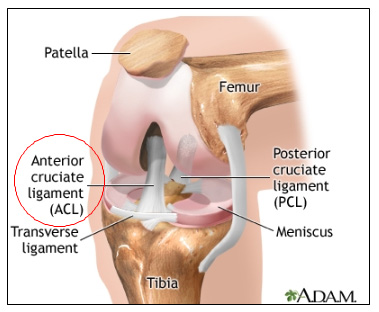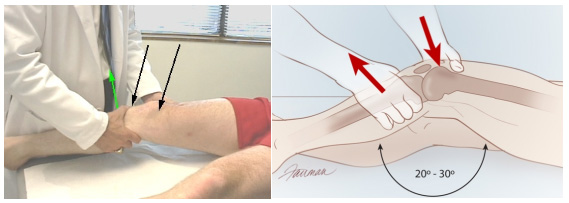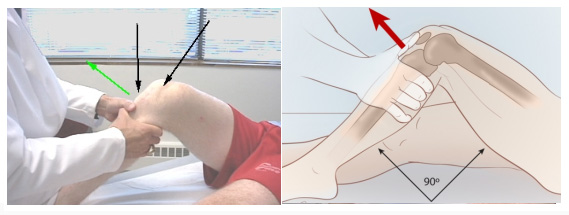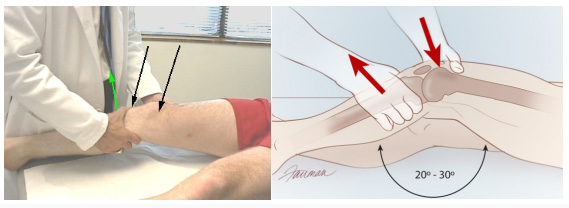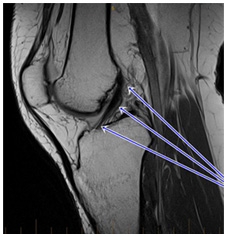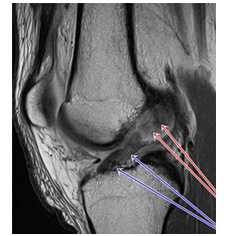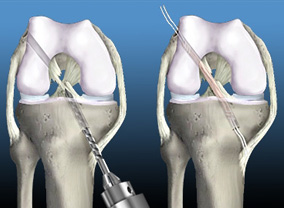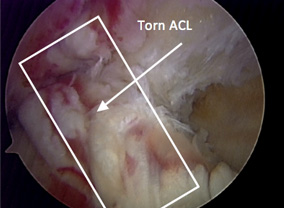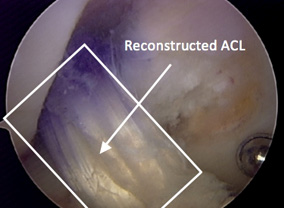Non-surgical treatment
In the case of a minor or partial rupture, non-surgical treatment may be considered as the primary treatment option. Thermal (ice) treatment, compression, and physical therapy may be used to control swelling, pain, and inflammation. This can be followed by a general strength training program for the lower extremities, including the thigh muscles.
Surgical treatment
Patients may consider a surgical reconstruction or allograft of the ACL depending on their age, gender, and occupation. Post-surgical rehabilitation also varies according to the type of surgical procedure. For a professional athlete, it typically takes a minimum of six months after an ACL tear to return to full activity.
 Knee Anterior Cruciate Ligament (ACL) Tear
Knee Anterior Cruciate Ligament (ACL) Tear
